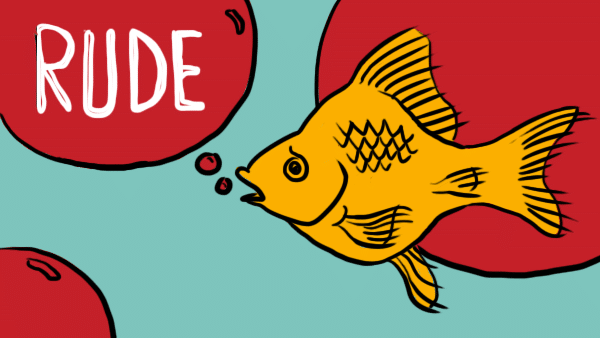Scientific Principles You Can Leverage to Maximize Attention Spans
Since the advent of the Internet, and especially as we’ve watched the meteoric rise of attention-grabbing pop-up ads, autoplay videos, and web banners, a common misperception has spread nearly as quickly as a viral 6-second microblog Vine video: the human attention span is shrinking.
We assume it is next to impossible to grab attention, let alone keep it, with attention spans dropping from 12 seconds to 8, and even hovering just under the dreaded “attention span of a goldfish” watermark (widely reported to be 9 seconds).
The good news? These stats are pretty flimsy.
Most reference a 2015 report that focused solely on a survey of 2000 Canadians along with a study of the brain activity of 112 people. And despite long-standing rumors, there’s actually little to no evidence that goldfish have poor attention spans. In fact, some researchers study goldfish to measure the processes of learning and memory formation.
Still, gaining attention is imperative.
Some consider it the new currency. Hand-drawn content is ideal for grabbing attention because it stimulates the “lizard brain” by creating motion, and further engages the viewer by generating surprise after surprise with each stroke of the pen or marker.
Motion and surprise are just a few of the countless ways to ensure your content can harness attention.
And all of these ways are rooted in science.
Play Upon Attention Triggers
Ben Parr’s 2015 book Captivology: The Science of Capturing People’s Attention relied upon scientific research on attention alongside interviews with dozens of prominent scientists and visionaries. He concluded that there are multiple psychological triggers that influence how we pay attention, and by mastering some or all of these triggers, we can increase the attention we attract.
A few of his findings:
- Use repetition to alter someone’s existing frame of reference. The more frequently something is repeated, the more likely it is to get attention and eventually be believed.
- If you are unexpectedly generous, people will instinctively be generous back with their attention. Be warm and kind to encourage people to open their minds to your ideas.
- When experts give us advice, we’re increasingly receptive to new thoughts, and potentially change our decision-making process. Lead with expertise, and your audience will be more likely to let you guide them.
Leverage Dopamine and the Compulsion Loop
Dopamine is a neurotransmitter in our brain’s command center for pleasure and rewards. Though commonly associated with behaviors like exercise, eating delicious food, and having positive interactions; this creates a neural trigger to release dopamine, resulting in a happy sensation.
That sensation sometimes compels us to want to repeat the positive action over and over again (the “compulsion loop”) in order to be rewarded.
These compulsion loops are commonly seen in video games—whether you’re completing a quest to save a princess or learning a particularly tough virtual guitar riff, you’re seeking the dopamine release you savor along with your success (whether you know it or not).
Now, scientists have discovered that the brain can actually learn the pattern behind these complex neuroscientific pathways, and replicate the pattern in order to get a release of dopamine. Serving up your audience something familiar, or following a specific pattern, can work similarly- delivering them a feel-good moment they will want to return to again and again.
Be Aware of Perceptual Neuroscience
We all like to think that what we’re saying or doing is the focus of attention. But reality begs to differ. In fact, in the scientific realm, they study what is sometimes termed “the cocktail party problem” –when there is a lot to focus on, how does the brain determine what is most important?
Researchers have found that the harder someone focuses on a specific area or topic in a certain scenario, the more other neurons pitch in to suppress irrelevant information. The examples in this fascinating article showcase what can happen in the brain depending on what an individual perceives as most important to focus on visually—and what can potentially get lost in the process.
Avoid Attention Residue – Train for Mindfulness
Everyone experiences a wandering mind from time to time. Research reveals that neurons can fire for only about 12 seconds with their existing energy- after that, they will start to look for further stimulation. Lack of focus can sometimes result.
The solution?
- Be mindful of your limitations– or your audience’s limitations- and work within those limitations to master your mind.
- Structure your content, lecture, or workflow, around switching up before your energy is depleted.
- When you’re attending to one task, or discussing a specific topic, be thorough before moving on.
Otherwise, you could reduce your performance due to what’s been termed attention residue– the reduction in cognitive capacity that happens when someone is overly distracted (for example, pausing a highly complex workflow to do a less complicated task like checking email).

